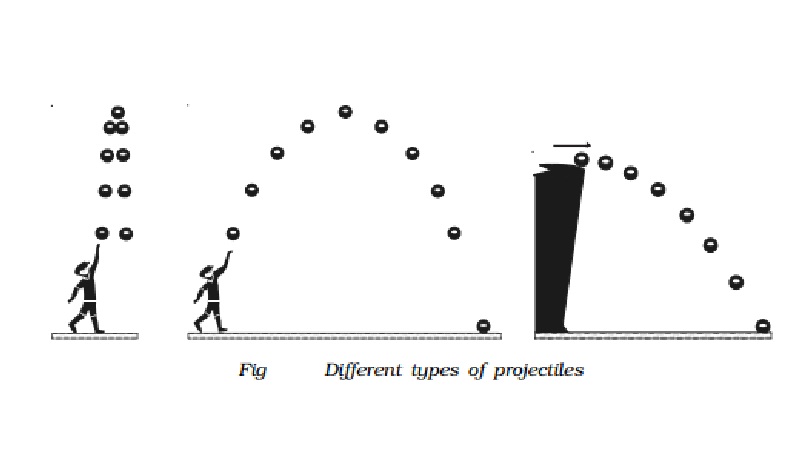Chapter: 11th 12th std standard Class Physics sciense Higher secondary school College Notes
Projectile motion

Projectile motion
A body thrown with some initial velocity and then allowed to move under the action of gravity alone, is known as a projectile.
If we observe the path of the projectile, we find that the projectile moves in a path, which can be considered as a part of parabola. Such a motion is known as projectile motion.
A few examples of projectiles are (i) a bomb thrown from an aeroplane (ii) a javelin or a shot-put thrown by an athlete (iii) motion of a ball hit by a cricket bat etc.
The different types of projectiles are shown in Fig.. A body can be projected in two ways:
1. It can be projected horizontally from a certain height.
2. It can be thrown from the ground in a direction inclined to it.
The projectiles undergo a vertical motion as well as horizontal motion. The two components of the projectile motion are (i) vertical component and (ii) horizontal component. These two perpendicular components of motion are independent of each other.
A body projected with an initial velocity making an angle with the horizontal direction possess uniform horizontal velocity and variable vertical velocity, due to force of gravity. The object therefore has horizontal and vertical motions simultaneously. The resultant motion would be the vector sum of these two motions and the path following would be curvilinear.
The above discussion can be summarised as in the List

List: Two independent motions of a projectile
Motion : Forces - Velocity - Acceleration
Horizontal : No force acts - Constant - Zero
Vertical : The force of gravity acts downwards - Changes (aprox 10 m s-1) - Downwards (aprox 10 m s-2)
In the study of projectile motion, it is assumed that the air resistance is negligible and the acceleration due to gravity remains constant.
Angle of projection
The angle between the initial direction of projection and the horizontal direction through the point of projection is called the angle of projection.
Velocity of projection
The velocity with which the body is projected is known as velocity of projection.
Range
Range of a projectile is the horizontal distance between the point of projection and the point where the projectile hits the ground.
Trajectory
The path described by the projectile is called the trajectory.
Time of flight
Time of flight is the total time taken by the projectile from the instant of projection till it strikes the ground.
Related Topics